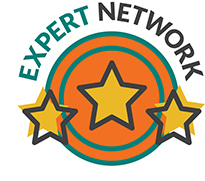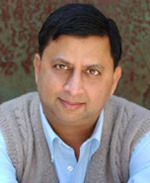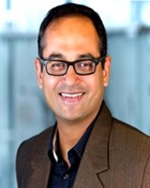Four Ways MedTech Can Thrive In Emerging Markets
By Gunjan Bagla, Anurag Asthana, and Katharina Missling
 The combined gross domestic product (GDP) of emerging economies already exceeds that of the developed world. Both the population and the per capita wealth of emerging economies — such as South Asia, Southeast Asia, sub-Saharan Africa, and South America — will continue to grow over the next two decades, while rich countries are projected to stay stable.
The combined gross domestic product (GDP) of emerging economies already exceeds that of the developed world. Both the population and the per capita wealth of emerging economies — such as South Asia, Southeast Asia, sub-Saharan Africa, and South America — will continue to grow over the next two decades, while rich countries are projected to stay stable.
Emerging countries are home to about 90 percent of the world’s infectious disease burden, while changing habits are increasing the incidence of chronic and lifestyle-related illnesses in these markets. In sectors such as energy, telecom, infrastructure, and consumer products, large companies are significant players in emerging markets. However, according to the Boston Consulting Group, only two percent of the revenues generated by the top 200 medical device companies arise from these emerging markets.
For medtech to achieve greater success, legacy approaches that led to success in serving the billion richest patients in the world may not translate in these markets. In this article, we address four strategies that can help global medical device companies gain stronger footing in these new and exciting markets.
- Understand Local Acceptability
The majority of patients, providers, and payers in rich countries recognize therapies, devices, and protocols based on western science and regulated by agencies such as the U.S. Food & Drug Administration (FDA). However, “allopathy,” as western medicine is called in emerging countries, is only one of many forms of treatment respected in these emerging countries. Chinese traditional medicine, homeopathy, Ayurveda, Unani, naturopathy, and other systems are respected by providers and patients alike in emerging markets. Western companies may disagree with these approaches, but dismissing them as “quackery” only creates mutual distrust.
For example, according to Professor Robert Malkin of Duke University, less than 40 percent of those who are ill in rural Thailand seek professional medical attention, instead turning to traditional treatments. When some of those patients have an absolute need for western medical devices or therapies, it would be helpful if their primary provider were aware of the choices available to their patient. Therefore, it makes sense for some multinational device companies to educate the entire ecosystem, and not just the physicians and hospitals who offer their products according to western practices.
- Empower Local Management
One company that has been successful in emerging markets is Cummins, a maker of power-generation products, including engines and generators. Ravi Venkatesan, the former CEO of Cummins’ India business, writes in Conquering the Chaos: Win in India, Win Everywhere, that “to succeed in big emerging markets like China, and India, companies need to be willing to find a good balance between standardization and local responsiveness.”
Venkatesan states that corporate leaders at many western multinational corporations treat each country the same, with little regard for nuances and variations across markets and cultures.
“There’s a clear us-versus-them mentality, with headquarters staff either telling the subsidiaries what to do or sitting in judgement of them, but seldom lending a helping hand. This can lead to frustration for country managers and a delayed time in getting things done,” writes Venkatesan. Creating a supportive culture at headquarters is key to having a successful operating model that will support the growth in the emerging market
- Provide Value-Based Healthcare
It may take three decades or more for patients in emerging economies to have incomes that equal the rich countries. In the meantime, global medical enterprises must develop a battery of approaches to provide value to the current ecosystem, or risk losing entire markets to homegrown competitors who will ultimately rise to threaten them in western markets — much as Korean and Japanese carmakers have done in the automotive sector. Here are a couple of ways to provide better value:
- Examine the true current cost structures of legacy products that have been sources of income for the company, and may be ready to be replaced by a newer generation in rich markets. Strip any overhead burden and other non-incremental costs, and offer the products to certain markets at a lower price point.
Smith & Nephew, for example, provides traditional pump- and vacuum-based therapy that requires special equipment, which can cost more than $10,000 a unit, and a dressing that costs nearly $900. Conversely, WuHan VSD Medical Science & Technology has created an approach that makes use of the wall-suction equipment common in hospitals in China. Hospitals need not buy the expensive pumps, medical practitioners need not carry special equipment on their rounds, and patients pay lower out-of-pocket expenses thanks to a Chinese dressing that costs about $400 less (in response, multinationals are adjusting their product portfolios).
If you can further cut costs through local manufacturing or customs duty avoidance, youmay grow your gross profits even further in certain markets.
- Re-engineer the product and solution from scratch to address the needs of target customers. You may take inspiration from the hotel business, which is greatly threatened by the rise of Airbnb. Nevertheless, London-based Yotel is growing by offering an experience targeted to the modern smartphone-equipped international traveler.
The front desk is replaced by 24/7 check-in kiosks to enable instant check-in; guest rooms feature keyless entry and smart TVs that enable guests to play their own content; and Yotel properties in Singapore, New York, and Miami are that can deliver luggage and amenities, such as towels.
Are you ready to be the Yotel of the medical device business? You might need to design products that deal with unstable electric power, grapple with a lack of distilled water, or produce reliable, medical-grade oxygen — but your solution could be embraced across the developing world.
4. Leverage Local Talent
Business models for sales, operations, service, and support assume a relatively high personnel cost in legacy markets. Yet labor and talent are abundant in poorer countries, such as China, India, and Indonesia.
Many western medical technology companies are dependent primarily on local distributors to sell into emerging countries, many of whom are thinly capitalized; these distributors may be good at accepting orders and service clients but are unable to invest in demand creation.
If companies provide in-house training in emerging markets to make the local staff effective, the returns can be substantial. For example, TransAsia Biomedical in India (a unit of Erba Mannheim) has taken advantage of channel segmentation to become the number-one IVD provider. In large metropolitan areas, the company has invested in an in-house sales force of about 400 and a service force of about 200. These reps cover more than 30,000 labs. To achieve even broader coverage, Transasia has a network of 350 non-exclusive dealers that sell small-ticket items, generate leads, and work with a group of subdealers. Transasia can afford this channel strategy because it has lower manufacturing costs than its multinational competitors, such as Abbott and Siemens.
Conclusion
All four strategies may not work for every medical technology company in every market. Some companies may not be ready to try more than one or two of these approaches until they have experienced some success. However, it would be wise to study all four approaches, in-depth and seriously. The world is changing too fast to ignore these realities.
About The Authors
 Gunjan Bagla is managing director of Amritt Inc., a California-based consulting firm focused on helping American companies to succeed in India. His clients include Covidien (now Medtronic), Roche Diagnostics, BD, Lifenet Health, Johnson & Johnson, Gojo, and more. He has appeared in The New York Times, the Los Angeles Times, and the Washington Post, as well as on Bloomberg TV, BBC Television, and Fox Business News. He also writes about India for the Harvard Business Review. Gunjan has an MBA from Southern Illinois University and a mechanical engineering degree from the Indian Institute of Technology (IIT) Kanpur in India.
Gunjan Bagla is managing director of Amritt Inc., a California-based consulting firm focused on helping American companies to succeed in India. His clients include Covidien (now Medtronic), Roche Diagnostics, BD, Lifenet Health, Johnson & Johnson, Gojo, and more. He has appeared in The New York Times, the Los Angeles Times, and the Washington Post, as well as on Bloomberg TV, BBC Television, and Fox Business News. He also writes about India for the Harvard Business Review. Gunjan has an MBA from Southern Illinois University and a mechanical engineering degree from the Indian Institute of Technology (IIT) Kanpur in India.
 Anurag Asthana is Head of R&D for Mettler Toledo’s Rainin division. His medical device experience includes stints at Hill-Rom, Covidien, and Medtronic. Anurag went to India as an expat in 2011 and, as Site Director for Covidien, helped establish an R&D Center in Hyderabad from scratch, then grew it to over 200 people in five years. Anuraghas applied his passion for healthcare innovation at several startups and through CAMTech, a body associated with Massachusetts General Hospital and Harvard Medical School. He has an Advanced Management Diploma from the Wharton Business School, MS degrees in Electrical Engineering from University of Louisville and Reliability Engineering from University of Maryland at College Park, and an MBA from Colorado State University.
Anurag Asthana is Head of R&D for Mettler Toledo’s Rainin division. His medical device experience includes stints at Hill-Rom, Covidien, and Medtronic. Anurag went to India as an expat in 2011 and, as Site Director for Covidien, helped establish an R&D Center in Hyderabad from scratch, then grew it to over 200 people in five years. Anuraghas applied his passion for healthcare innovation at several startups and through CAMTech, a body associated with Massachusetts General Hospital and Harvard Medical School. He has an Advanced Management Diploma from the Wharton Business School, MS degrees in Electrical Engineering from University of Louisville and Reliability Engineering from University of Maryland at College Park, and an MBA from Colorado State University.
 Katharina Missling is a Project Manager at Wissensfabrik in Ludwigshafen, Germany. She has a master’s degree in Marketing & Innovation from Mannheim University in Germany, where her thesis was titled Emerging Markets and their Resource Constraints: A qualitative Impact Assessment on the Innovation Process. Leveraging innovation to solve socio-economic challenges is what drives her.
Katharina Missling is a Project Manager at Wissensfabrik in Ludwigshafen, Germany. She has a master’s degree in Marketing & Innovation from Mannheim University in Germany, where her thesis was titled Emerging Markets and their Resource Constraints: A qualitative Impact Assessment on the Innovation Process. Leveraging innovation to solve socio-economic challenges is what drives her.
